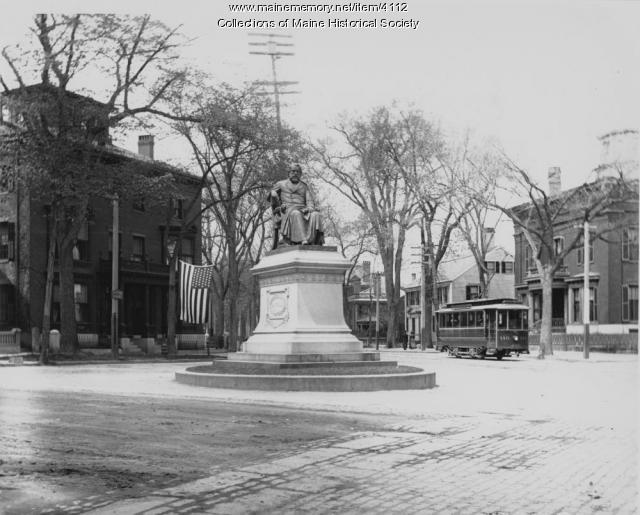Keywords: Henry Wadsworth Longfellow monument
Item 149788
Henry Wadsworth Longfellow statue, Portland, ca. 1888
Contributed by: NPS, Longfellow House-Washington's Headquarters National Historic Site Date: circa 1888 Location: Portland Media: Cartes-de-visite
Item 4112
Statue of Henry Wadsworth Longfellow, Portland, ca. 1910
Contributed by: Maine Historical Society Date: circa 1910 Location: Portland Media: Photographic print
Exhibit
Longfellow: The Man Who Invented America
Henry Wadsworth Longfellow was a man and a poet of New England conscience. He was influenced by his ancestry and his Portland boyhood home and experience.
Exhibit
Home: The Longfellow House & the Emergence of Portland
The Wadsworth-Longfellow house is the oldest building on the Portland peninsula, the first historic site in Maine, a National Historic Landmark, home to three generations of Wadsworth and Longfellow family members -- including the boyhood home of the poet Henry Wadsworth Longfellow. The history of the house and its inhabitants provide a unique view of the growth and changes of Portland -- as well as of the immediate surroundings of the home.
Site Page
Early Maine Photography - Famous People - Page 3 of 3
"Henry Wadsworth Longfellow HW Longfellow at Nahant, 1850 Maine Historical Society This rare glass stereo view shows a beardless Henry Wadsworth…"
Lesson Plan
What Remains: Learning about Maine Populations through Burial Customs
Grade Level: 6-8
Content Area: English Language Arts, Social Studies, Visual & Performing Arts
This lesson plan will give students an overview of how burial sites and gravestone material culture can assist historians and archaeologists in discovering information about people and migration over time. Students will learn how new scholarship can help to dispel harmful archaeological myths, look into the roles of religion and ethnicity in early Maine and New England immigrant and colonial settlements, and discover how to track changes in population and social values from the 1600s to early 1900s based on gravestone iconography and epitaphs.









